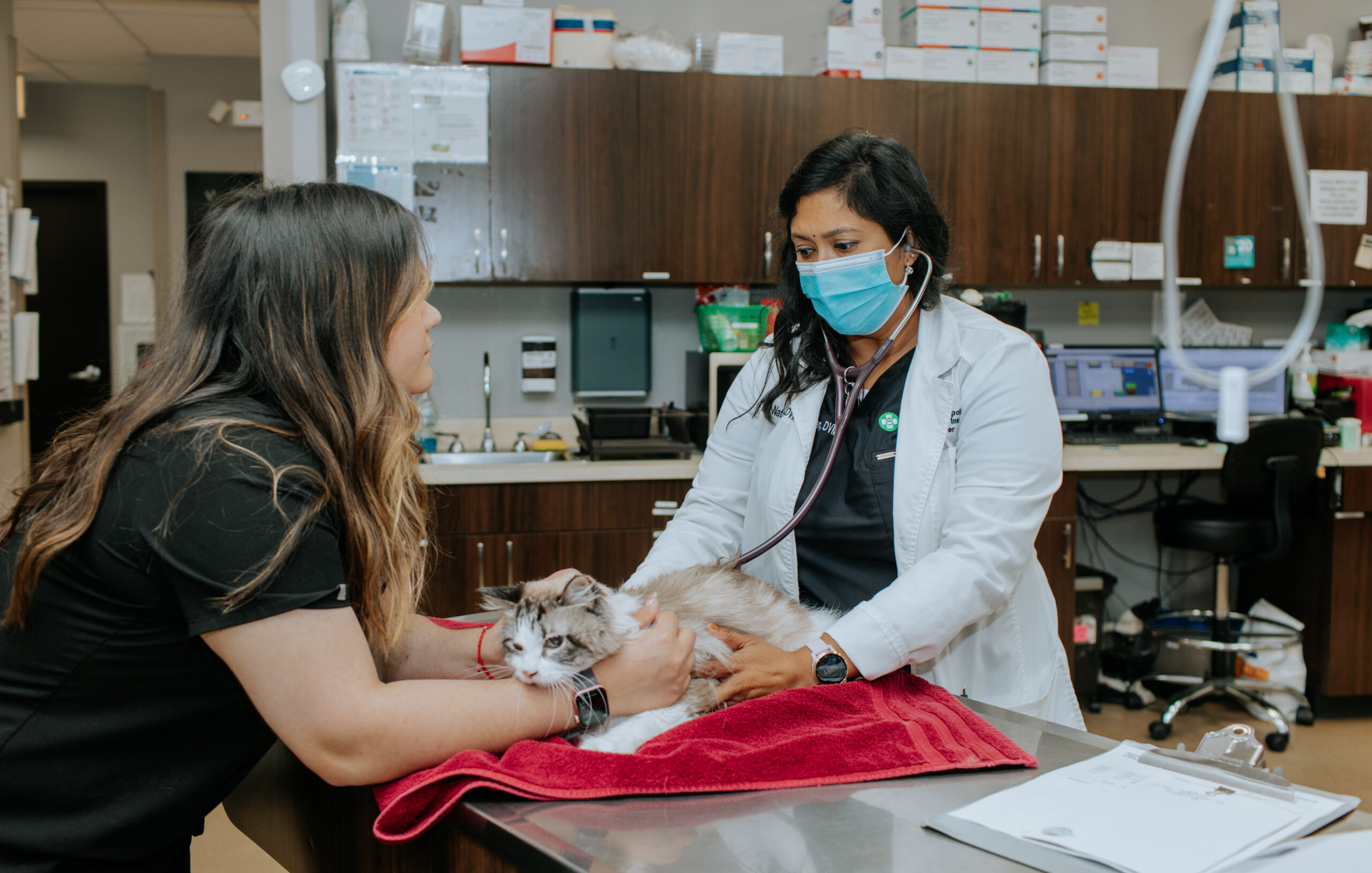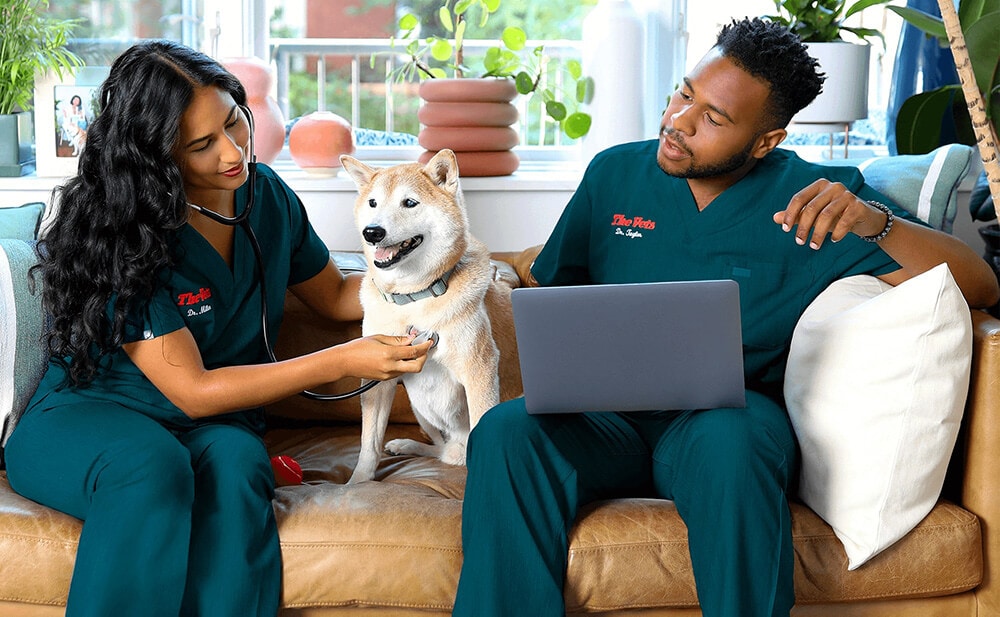Why Animal Rehab Is Critical: the Benefits of Vet Services for Your Family pet's Healing
Pet rehab is a vital part of healing for family pets facing injuries or specials needs. Veterinary solutions supply important support via tailored rehabilitation strategies that resolve individual demands. These plans commonly consist of discomfort administration, physical therapy, and dietary assistance. Understanding the numerous facets of pet rehabilitation can illuminate its significance in improving healing outcomes. What details benefits do these solutions provide, and how can they transform a pet's recovery journey?
Recognizing Pet Rehabilitation
Pet rehab incorporates a series of therapeutic practices targeted at restoring the health and wellness and functionality of damaged or handicapped animals. This field incorporates numerous strategies, including physical therapy, hydrotherapy, and work-related therapy, customized to meet the particular requirements of each animal. Rehabilitation professionals examine an animal's condition, establishing individualized therapy strategies that may involve exercises to reinforce muscles, boost wheelchair, and enhance total well-being. The procedure not only concentrates on physical healing yet also addresses emotional and behavioral facets. Pets commonly experience tension and anxiousness complying with an injury, making psychological health and wellness factors to consider essential in rehab. By creating an encouraging atmosphere, therapists can aid pets regain their confidence and adjust to their brand-new circumstances. With normal sessions, animals can experience substantial renovations, ultimately resulting in a far better top quality of life. On the whole, recognizing pet recovery highlights its value in promoting recovery and improving the bond between family pets and their owners.
The Role of Pain Administration in Recuperation
Exactly how vital works pain monitoring in the healing of damaged animals? It plays an essential function in promoting healing and enhancing the total well-being of pet dogs. Correct discomfort administration not only reduces discomfort yet likewise promotes mobility, allowing animals to take part in rehab tasks needed for healing. When discomfort is properly taken care of, pets have a tendency to respond positively to therapy, leading to quicker rehabilitation outcomes.Veterinarians use numerous methods to assess and resolve pain, consisting of medications, acupuncture, and different therapies. By customizing discomfort monitoring techniques to the individual demands of each pet, vets can guarantee that family pets remain tranquil and participating throughout their healing trip. In addition, decreasing pain helps decrease anxiety, which can prevent recovery and prolong healing times. To sum up, reliable discomfort management is necessary for boosting the healing process and improving the lifestyle for damaged pets.
Physical Treatment Methods for Animals
Various physical therapy techniques are available to help in the rehabilitation of pets recuperating from injuries or surgical treatments (tplo surgery for dogs). These techniques can boost flexibility, relieve pain, and promote healing. Restorative workouts, for example, help strengthen muscle mass and boost joint feature, allowing pets to restore their physical capabilities progressively. Manual treatment, which includes massage therapy and mobilization, can minimize tension and boost flow, adding to a much faster recovery.Other methods such as easy array of motion workouts urge joint flexibility and decrease stiffness. Furthermore, electrical excitement therapy may be utilized to boost nerves and muscles, promoting healing and pain relief.Veterinary experts often customize these methods to each animal's details needs, guaranteeing a comprehensive rehab strategy. By implementing these physical treatment approaches, pet dogs can experience improved lifestyle and an extra successful recuperation from their ailments. The combination of these techniques into rehab programs is crucial for optimal recuperation results
Benefits of Hydrotherapy for Rehabilitation
Hydrotherapy provides substantial benefits in animal rehabilitation, specifically in enhancing mobility. This water-based treatment promotes discomfort relief while providing comfort to harmed or recouping family pets. Additionally, it facilitates strength-building workouts that add to total physical healing.
Boosted Wheelchair Improvement
As pets recuperate from injuries or surgical procedures, improved flexibility usually ends up being a primary goal of their rehab. Hydrotherapy works as a beneficial device in attaining this purpose. With water-based exercises, animals can involve in low-impact motions that assist in joint wheelchair and reinforce muscles without the tension of weight-bearing tasks. The buoyancy of water sustains their bodies, permitting raised array of motion and flexibility renovation. Furthermore, hydrotherapy encourages better equilibrium and control, which are crucial for restoring regular activity patterns. Routine sessions can bring about substantial progress in an animal's physical capabilities, ultimately boosting their top quality of life. This technique not only help in healing however also advertises a much more energetic and fulfilling lifestyle post-rehabilitation.
Discomfort Relief and Convenience

Remedy for pain is an essential aspect of animal rehab, and hydrotherapy greatly adds to this procedure. By utilizing water's buoyancy, hydrotherapy decreases joint anxiety and minimizes discomfort throughout activity. This healing strategy supplies a soothing atmosphere where family pets can participate in mild workouts without the full weight of their bodies influencing their healing. The warm water promotes blood circulation, advertising healing while also urging leisure. Furthermore, hydrotherapy sessions can be customized to satisfy the particular demands of the pet, guaranteeing ideal convenience. As pet dogs experience reduced pain and increased comfort levels, their general willingness to take part in rehabilitation tasks often boosts, resulting in a more efficient recuperation journey. Hydrotherapy offers as a vital tool in improving pain alleviation and convenience throughout rehab.
Strength Building Workouts
Strength-building workouts play an important duty in the rehabilitation process, with hydrotherapy offering one-of-a-kind advantages. This type of treatment uses water resistance to boost muscle strength without putting extreme pressure on the joints. The buoyancy of water sustains the pet's weight, permitting for much safer motion and boosted variety of motion. Furthermore, hydrotherapy can enhance cardiovascular health and wellness and advertise overall physical fitness, assisting in much faster recovery from injuries or surgical procedures. The regulated atmosphere additionally minimizes the risk of reinjury, making it a suitable choice for pets needing rehab. Regular hydrotherapy sessions can cause visible improvements in wheelchair, stamina, and endurance, ultimately enhancing the animal's lifestyle and capacity to go back to typical activities.
Significance of Customized Rehabilitation Plans
Personalized rehab plans are important for attending to the one-of-a-kind demands of each pet, guaranteeing individualized treatment methods. These strategies enable for reliable progress monitoring and necessary adjustments, fostering excellent healing outcomes. Additionally, a holistic strategy can enhance the overall wellness of the pet, promoting a much more complete rehab experience.
Individualized Therapy Approaches
While many rehab programs embrace a one-size-fits-all technique, the unique demands of each animal necessitate personalized treatment strategies for suitable recovery. Custom-made rehab strategies take right into account different aspects, consisting of the pet's varieties, age, case history, and specific injuries or conditions. By tailoring interventions, vets can address each family pet's special difficulties, making the most of the effectiveness of the rehab procedure. Embellished here plans may incorporate different modalities such as physical treatment, hydrotherapy, and healing workouts, ensuring that the therapy straightens with the animal's capacities and progress. In addition, individualized approaches cultivate a more powerful bond between the animal and the caregiver, advertising a more interesting and supportive recuperation atmosphere. Eventually, customized therapy is essential for attaining best possible outcomes in animal rehab.
Progress Tracking and Adjustments

Holistic Recuperation Methods
Alternative recovery techniques are necessary for reliable pet rehab, as they emphasize the relevance of customized treatment strategies customized to every animal's specific requirements. This method takes into consideration the physical, emotional, and ecological factors impacting recuperation. Customized rehabilitation plans might include a mix of physical therapy, dietary therapy, and behavioral alterations. By attending to these varied aspects, vets can improve the total health of the animal and advertise a faster recuperation. Such tailored methods promote a deeper understanding of the animal's one-of-a-kind challenges, leading to much more reliable interventions. Ultimately, alternative recuperation techniques not only improve physical wellness yet additionally add to the animal's mental and psychological security, making certain an extensive rehab experience.
The Effect of Nourishment on Recuperation
Nourishment plays an important function in the recuperation procedure for fixing up animals, commonly establishing the rate and performance of recovery. A healthy diet regimen gives the necessary nutrients that support tissue fixing, improve the body immune system, and boost general vigor. Protein is particularly important, as it aids in muscle rebuilding and recuperation from injuries. Crucial fatty acids, vitamins, and minerals additionally add to decreasing swelling and advertising ideal mobile function.Veterinarians frequently emphasize the importance of tailored nutrition plans, thinking about each animal's details requirements, age, and health and wellness status. Proper hydration is similarly vital, as liquids facilitate vitamins and mineral absorption and aid in detoxing. By guaranteeing that animals receive appropriate nutrition, caregivers can substantially improve their chances of an effective healing, causing much better long-term wellness results. Inevitably, nutrition works as a foundational aspect in the rehab journey, sustaining animals in reclaiming stamina and strength post-injury or health problem.
Success Stories: Animals That Flourished After Recovery
Successful rehab stories are plentiful, showcasing the durability of pets that have actually gotten over significant challenges. Take, for example, Bella, a gold retriever that endured extreme injuries from an automobile mishap. With devoted veterinary treatment and a comprehensive rehab program, she restored her flexibility and went back to her spirited self, much to her proprietor's delight. Max, an elderly pet cat detected with arthritis, experienced remarkable renovation through a combination of physical therapy and pain management. His newfound agility allowed him to appreciate his preferred sunbathing spots once more. An additional motivating instance is that of Coco, a saved greyhound who got over stress and anxiety with therapy and socializing methods, allowing her to prosper in her new home. These success tales exhibit the transformative power of pet recovery, stressing that with the best support, pet dogs can not just recuperate yet lead meeting lives, improving the bonds they show their families.
Frequently Asked Questions
The length of time Does the Recovery Refine Generally Consider Family Pets?
The rehab procedure for pet dogs typically differs based upon the injury or problem, ranging from a few weeks to a number of months. Individual progress, therapy type, and commitment to workouts substantially affect the general duration of recuperation.
Exist Any Type Of Risks Connected With Animal Recovery?
Pet rehabilitation might lug threats such as exacerbation of injuries, incorrect methods leading to pain, or inadequate monitoring throughout healing. These aspects can impede progression and affect the overall performance of the recovery procedure.

Can All Pets Take Advantage Of Rehabilitation Providers?
Not all family pets may call for rehabilitation, yet many can benefit greatly. Rehabilitation services can enhance mobility, reduce discomfort, and improve total wellness, particularly for those recouping from injuries, surgical procedures, or persistent problems.
Just How Can I Prepare My Animal for Rehab Procedure?

What Indications Indicate My Pet Requirements Rehabilitation?
Signs suggesting a pet dog may need rehab include problem strolling, hopping, lowered task degrees, reluctance to leap, or indicators of discomfort. Observing these behaviors can trigger proprietors to seek expert analysis and treatment for their animals.